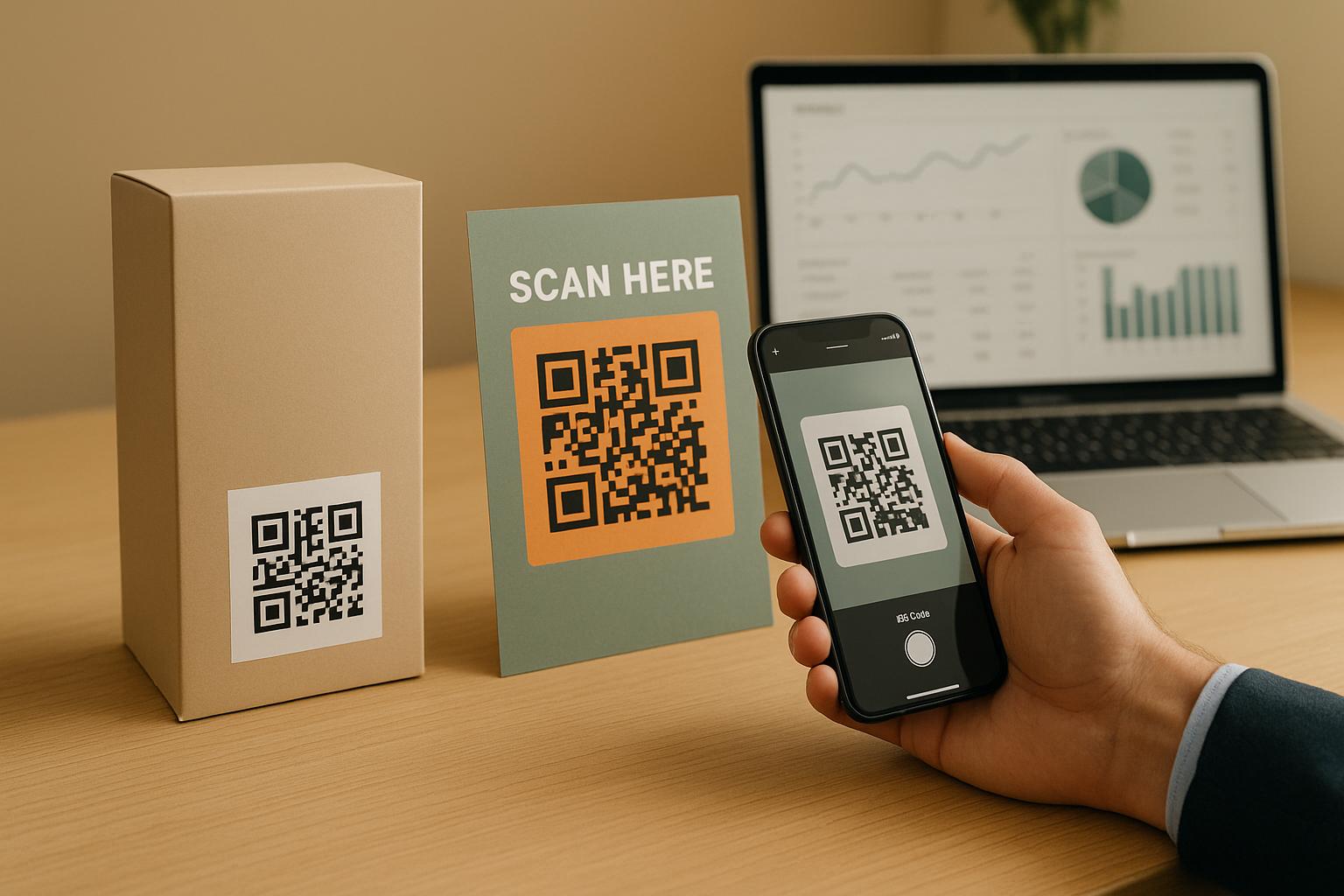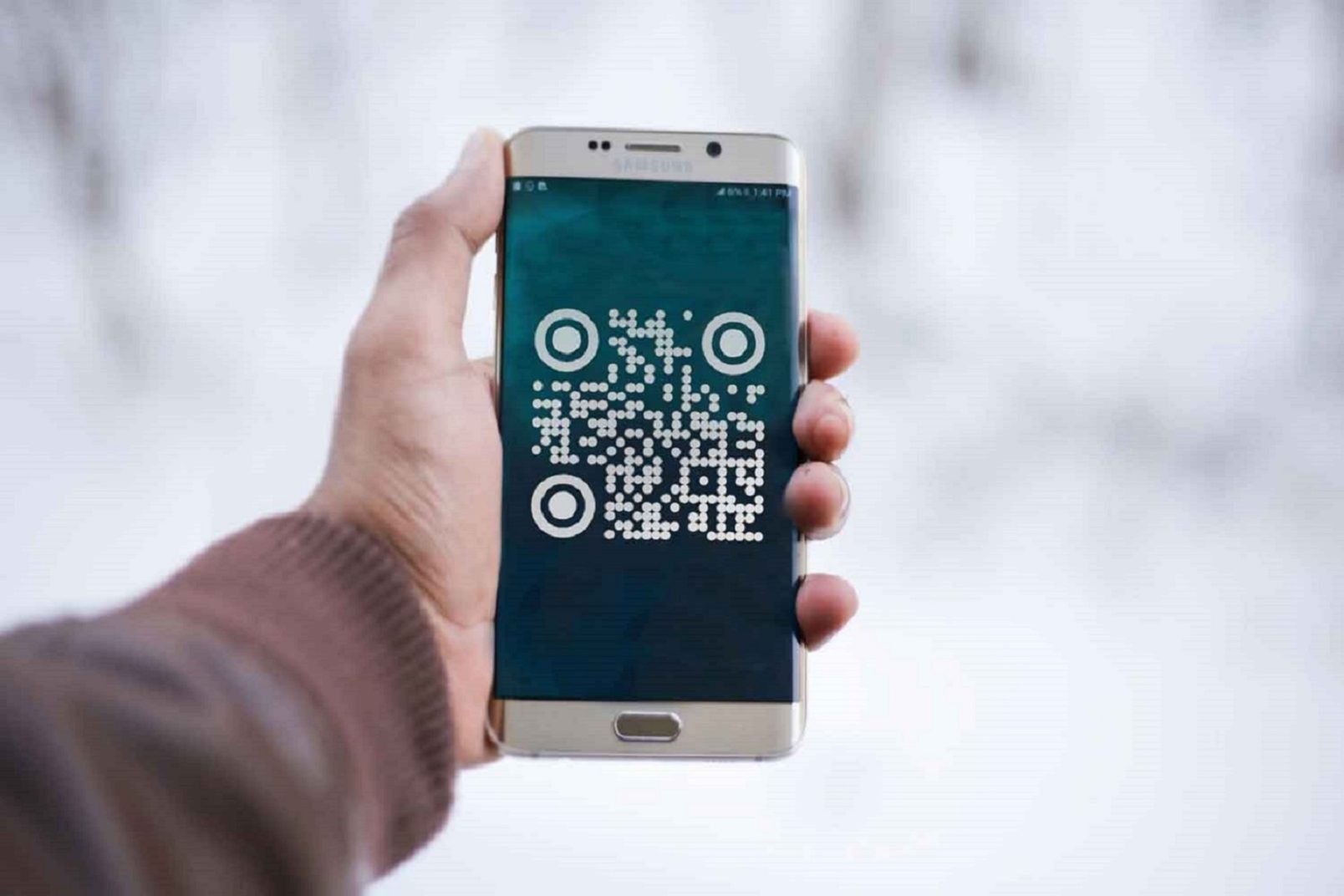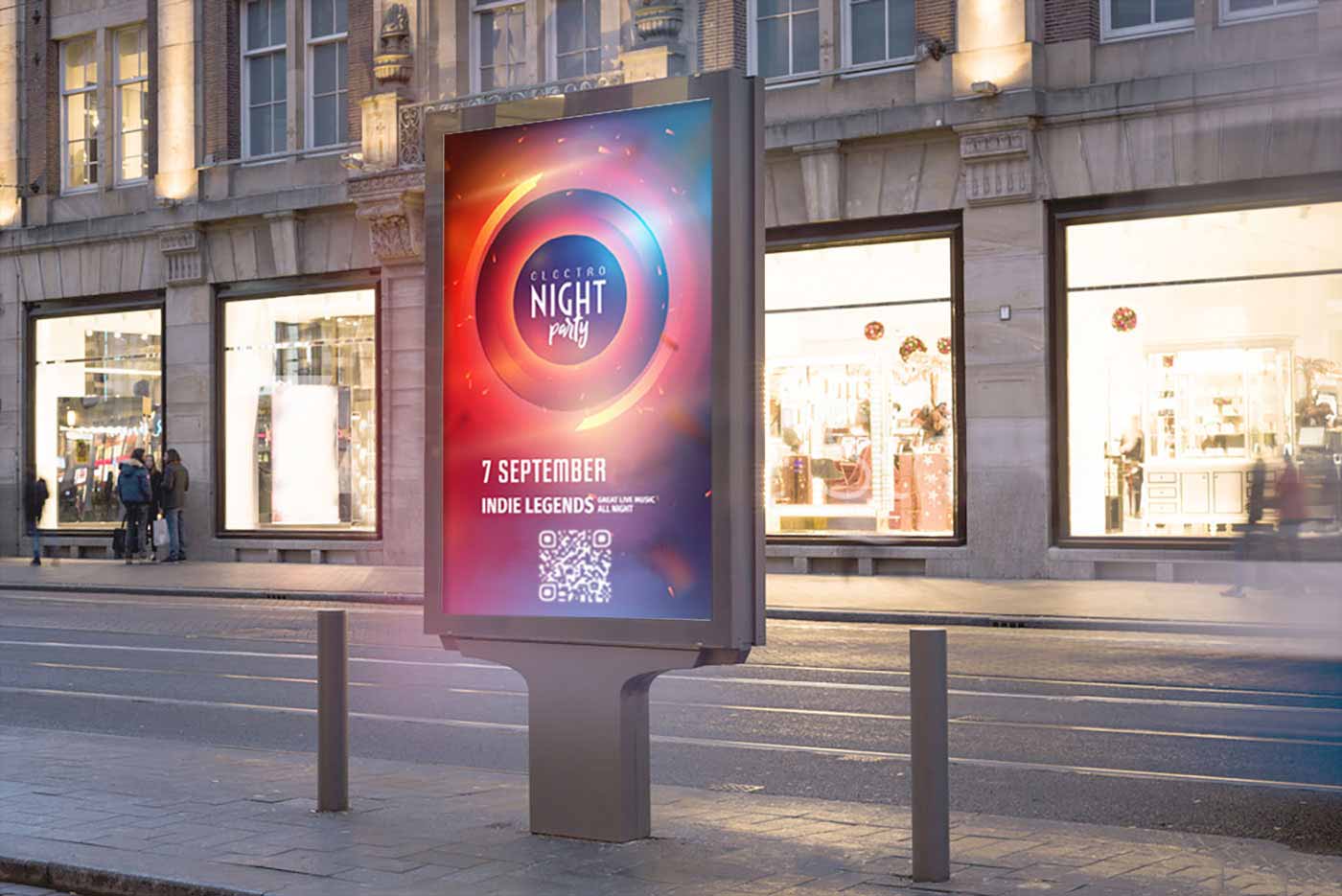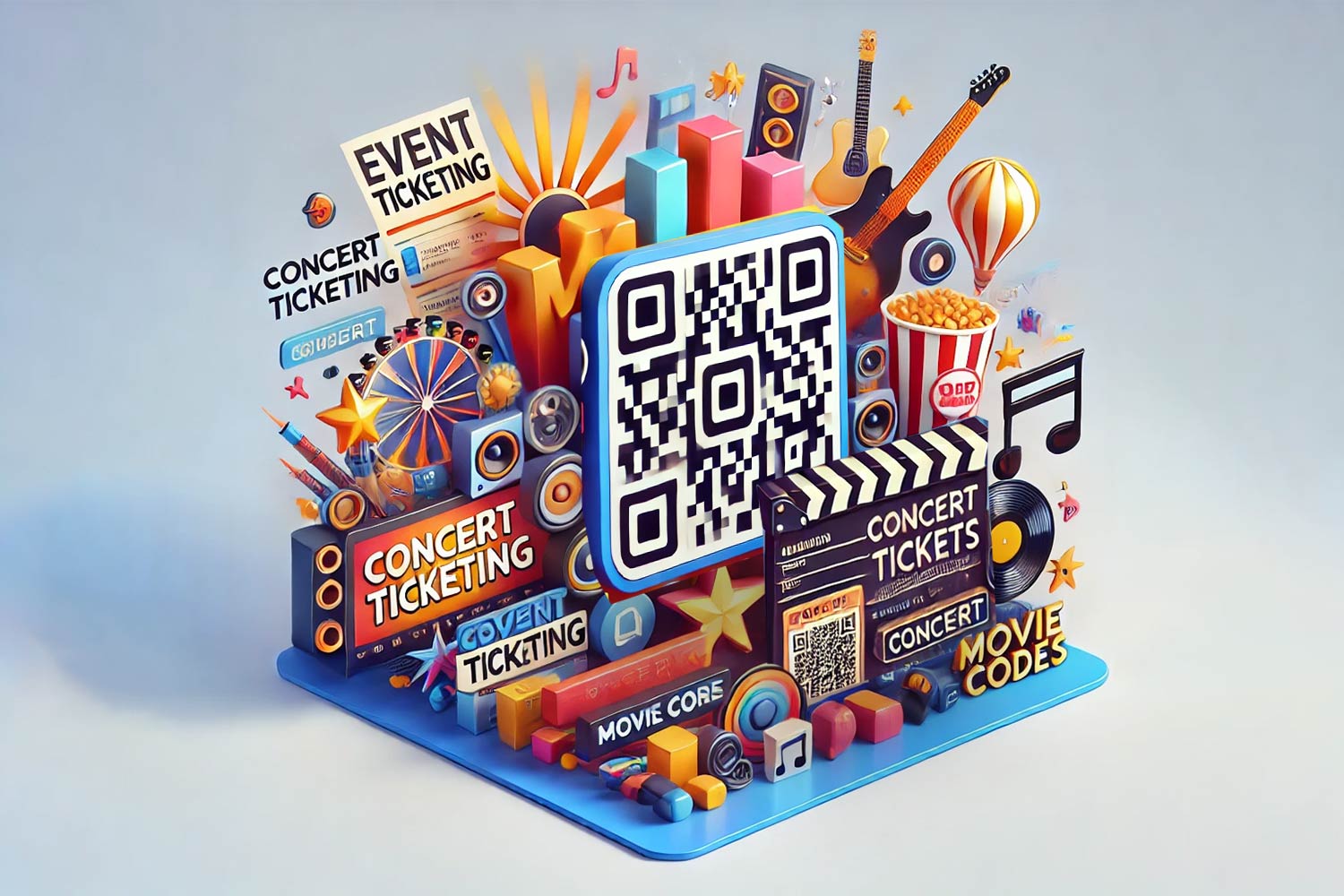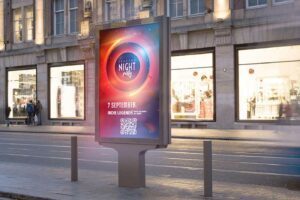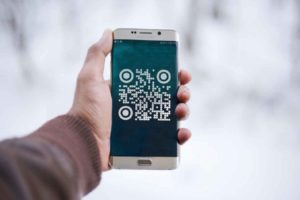A/B testing QR code campaigns helps marketers and businesses make smarter decisions by testing two versions of a campaign to see what works best. This method eliminates guesswork and focuses on data-driven results, improving scan rates, engagement, and conversions. Here’s how you can leverage A/B testing for QR codes effectively:
- Test Variables: Experiment with QR code design, placement, call-to-action text, and associated landing pages.
- Dynamic QR Codes: Use these to update content without reprinting, enabling flexible, real-time adjustments.
- Tracking Tools: Monitor metrics like scan rates, conversions, and user behavior using analytics platforms.
- Distribution Channels: Test QR codes across print, digital, and product packaging to identify the most effective placements.
- Analyze Results: Focus on key metrics like scan rates, time-based analytics, and conversion data to find actionable insights.
Static vs Dynamic QR Codes: Which One Should You Use in 2025?
Planning and Setting Up an A/B Test for QR Codes
Clear planning is essential for successful A/B testing, especially when it comes to QR codes. By defining your goals, selecting the right variables, and designing QR codes strategically, you can gather meaningful insights to improve performance.
Setting Goals and Forming Hypotheses
Before you start creating QR codes for testing, establish specific objectives. These goals guide every aspect of your A/B test, from design choices to how you measure success. Your objectives might include increasing scan rates, driving app downloads, boosting conversions, or growing your social media audience.
Make sure your QR code goals align with your broader campaign objectives. For instance, if you’re running a promotion, the goal could be to increase discount redemptions. A restaurant might aim to encourage customers to view a digital menu, while a real estate agent could focus on driving more views of property listings.
Once your goals are set, develop testable hypotheses. These should address specific changes you believe will improve performance, such as experimenting with logo placement, messaging, or where the QR code is displayed. A strong hypothesis is always measurable, allowing you to clearly determine what works and what doesn’t.
Here are some questions to consider before launching your test:
- Where will the QR code be displayed – indoors or outdoors?
- Does it require a special scanner?
- Is the goal to increase Facebook likes, grow an email list, or gain subscribers?
In 2013, Singapore’s VivoCity shopping mall used four life-sized QR codes to boost Facebook page likes during the Great Singapore Sale. Mascots called "VivoCity’s Codeys" roamed the mall, encouraging visitors to scan the QR codes. Scanning led users to a contest promo page and prompted them to "Like" the Facebook page. The campaign resulted in 8,618 scans and nearly doubled their Facebook likes to 4,400.
This example highlights how having a clear purpose ensures the QR code enhances the user experience rather than creating confusion. Once your goals and hypotheses are in place, you can focus on selecting the elements to test.
Choosing Variables to Test
A/B testing for QR codes offers a range of elements to experiment with, but it’s crucial to test only one variable at a time. This ensures you can pinpoint what’s driving performance differences.
Calls to Action (CTAs): Instead of generic phrases like "Scan here", try options that spark curiosity or urgency, such as "Scan for exclusive access", "Unlock special content", or "Get your discount now." Each variation targets different user motivations.
Headlines: Test different messaging to see which resonates most with your audience. For example, a marketing agency could compare "Download our portfolio" with "See our award-winning work" to find out which approach connects better.
Location and Placement: Where you display the QR code matters. A code on a business card might perform differently than one on a poster or flyer due to factors like lighting, foot traffic, and viewing distance.
QR Code Types: Different QR codes serve different purposes. A PDF QR code might work well for sharing detailed documents, while a video QR code can make product demonstrations more engaging. For events, an email QR code might encourage direct contact more effectively.
Once you’ve decided on your variables, it’s time to create and customize your test QR codes.
Creating and Customizing Test QR Codes
After identifying the variables you want to test, start by creating your control version (Version A), which serves as your baseline. Then, create a test version (Version B), changing only the single variable you’ve chosen. For example, if you’re testing color, ensure all other elements remain the same.
Dynamic QR codes are particularly useful for A/B testing because they let you update the destination content without needing to reprint the physical codes. This flexibility allows you to test different landing pages, offers, or messages while using the same printed materials. Plus, with real-time tracking, you can make adjustments as your campaign progresses.
Tailor each QR code to its display context. For instance, a QR code on a vehicle might need to be larger and have higher contrast than one on a business card. Consider scanning distance and lighting conditions to ensure usability.
Finally, offer something valuable to users who scan the code. Whether it’s a special offer, exclusive content, or helpful information, the destination should make the effort worthwhile. Set up proper tracking for each version using unique URLs or tracking parameters. This step is critical for measuring results accurately and deciding which version to implement long-term. With these steps in place, you’re ready to execute your A/B tests.
Running and Managing QR Code A/B Tests
Once your QR codes are ready for testing, the next step is all about execution. This phase is crucial for collecting reliable data. The way you distribute your codes, use dynamic features, and integrate tracking tools will determine whether your test yields actionable insights.
Distributing QR Codes Across Channels
Getting your QR codes in front of the right audience is key to ensuring your test provides meaningful results. Choosing the right channels can make all the difference in reaching enough people to achieve statistically significant data.
Print materials are still a powerhouse for QR code campaigns. For example, placing QR codes on flyers in high-traffic areas like coffee shops, community centers, or college campuses can generate a lot of scans. Direct mail campaigns also benefit from QR codes – marketers have seen a 9% boost in response rates when using digital links, with 30% opting for personalized QR codes and 18% using static ones. A great case study comes from Direct Response Media Group (DRMG), which used dynamic QR codes in direct mail campaigns across 200 Canadian cities. Their strategy resulted in 68,000 engagements and 28,000 unique users.
Digital channels offer precise targeting and flexibility. Platforms like social media, email newsletters, and digital ads give you control over who sees each version of your test. Taco Bell, for instance, used dynamic QR codes in promotional materials and updated their linked content weekly. This approach kept their audience engaged, boosted sales, and reinforced brand awareness.
Event distribution is another effective method, delivering immediate feedback and high engagement. Netflix used this strategy by incorporating QR codes in Gilmore Girls-themed pop-up coffee shops. These codes unlocked a special Snapchat filter, blending physical and digital experiences in a fun way. Events like these allow for direct observation of user behavior, adding qualitative insights to your data.
Product packaging provides a continuous connection with customers. Wendy’s used QR codes on their packaging to drive mobile conversions, offering exclusive deals, nutritional info, and promotional content. This strategy works particularly well for products with repeat purchases, giving you multiple opportunities to test and refine.
When using multiple channels, ensure your QR codes are visible and easy to scan. Test them in different lighting conditions and on various smartphone models before launching. The code should be at least 2 x 2 centimeters in size, have high contrast, and include a clear white border around it. This attention to detail ensures your codes perform well across all distribution methods.
Using Dynamic QR Codes for Flexibility
Dynamic QR codes are a game-changer for A/B testing because they allow you to update content in real time without reprinting materials. If one version of your test isn’t performing well, you can instantly redirect scans to another version. This feature is especially useful for time-sensitive campaigns or when testing multiple variables.
For example, a restaurant can use dynamic QR codes to switch between lunch and dinner menus automatically. Similarly, a retailer can update product offerings based on inventory levels. This kind of real-time optimization keeps your campaigns relevant and effective.
Dynamic QR codes also allow for progressive testing. You can start with two landing pages and gradually test additional variables like offers, formats, or calls-to-action – all without reprinting materials. This flexibility makes it easier to refine your campaigns as you go.
Another advantage is personalization. Dynamic codes can deliver location-specific content, time-sensitive messages, or device-optimized experiences. They also provide detailed tracking data, such as scan counts, geographic locations, and user behavior. This information helps you fine-tune your current tests and plan future strategies.
To make the most of dynamic QR codes, establish clear protocols for updating content. Document every change and its timing to maintain the integrity of your test data. Set up alerts for significant performance shifts so you can respond quickly to any unexpected trends.
Connecting QR Codes with Tracking Tools
Robust tracking is the final piece of the puzzle for effective A/B testing with QR codes. Once your codes are distributed and optimized, tracking helps turn raw scan data into meaningful insights.
Integrate your QR codes with analytics platforms like Google Analytics, Adobe Analytics, or specialized QR tracking tools. Use UTM parameters or unique tracking URLs for each test version to keep your data organized and separate.
Track conversions directly tied to your goals. For instance, if your QR code leads to a PDF download, monitor both the scans and the actual downloads. For email signup campaigns, track the entire process from scan to confirmed subscription.
Marketing automation tools can further enhance your testing. Based on which version of a QR code someone scans, you can add them to different email sequences, retargeting campaigns, or lead scoring systems. This helps you measure long-term differences in value between test variations.
Real-time dashboards are invaluable for monitoring test performance. Platforms like Pageloot provide instant tracking of scan patterns, geographic data, and device preferences. This allows you to make quick adjustments and spot trends early.
"QR codes are powerful tools for bridging the physical and digital marketing gap. They enhance user engagement by providing instant access to online content and interactive experiences." – Clash Graphics
To fully understand the impact of your QR codes, connect your tracking to other marketing channels. For example, link QR code scans to social media interactions, email opens, or website visits. This cross-channel attribution gives you a clearer picture of how QR codes contribute to your overall campaign success.
Finally, maintain data quality by filtering out bot traffic, duplicate scans, and other anomalies. Use heat mapping tools to see how users interact with your landing pages after scanning. Regularly validate your tracking systems to ensure everything is working as expected, preventing any data loss that could compromise your results.
sbb-itb-74874c9
Analyzing and Understanding A/B Testing Results
After setting up your test and tracking data in real time, the next step is to dive into the analysis. This phase helps uncover the factors behind your campaign’s performance. It’s not just about surface-level metrics – it’s about understanding what truly drives user behavior and outcomes.
Key Metrics to Track for QR Code Campaigns
The success of any A/B test hinges on tracking the right metrics. QR codes provide a treasure trove of data that goes far beyond just counting scans. By focusing on these key areas, you can gain a more complete understanding of how your campaigns perform.
Scan Rates and Engagement Patterns
At the heart of your analysis are scan rates. Track both total scans (all interactions) and unique scans (new visitors) to differentiate between reach and repeat engagement. For instance, total scans tell you how often users interact, while unique scans reveal how well your campaign is attracting fresh audiences.
Location Data
Knowing where your QR codes perform best can guide your strategy. For example, a restaurant placed QR codes on flyers around the city and discovered most scans came from office-heavy areas. They used this insight to launch targeted lunch promotions in those zones, boosting foot traffic and lunchtime sales. Similarly, a gym wear brand noticed scan spikes near college campuses after fitness classes, leading to hyper-focused campaigns that drove better engagement and conversions.
Time-Based Analytics
When are users most likely to scan? Time-based data can reveal peak engagement periods. A coffee shop with QR codes on its mobile truck learned that most scans occurred near office parks during weekday lunch hours. By adjusting their schedule to these high-performing times, they doubled offer redemptions and improved campaign ROI.
Device and Operating System Data
Understanding which devices and operating systems your audience uses can improve user experience. For instance, a fitness brand found that over 70% of scans on their water bottle QR codes came from Android devices. This insight led them to prioritize Android app development, resulting in better app performance, higher ratings, and improved retention.
Conversion Metrics
Scans are just the beginning – track what happens next. Whether it’s downloads, email signups, purchases, or app installations, analyzing the full funnel from scan to conversion reveals the true impact of your campaign. Metrics like session duration, bounce rate, and pages per session help you gauge user engagement after scanning.
Revenue Attribution
Tie QR code performance to business outcomes. For example, a footwear brand added QR codes to their best-selling sneakers, linking to a digital styling guide. Analytics showed spikes in scans for certain models, enabling targeted follow-up campaigns for matching accessories. This approach increased average order values and repeat purchases.
With QR code scans projected to hit 26.95 million in 2024 – a four-fold increase – businesses that master analytics will have a clear advantage. By focusing on these metrics, you can identify which test variations yield the best results.
Comparing Performance and Finding Insights
Once you’ve gathered enough data, it’s time to compare your test variations and uncover what works best. But drawing conclusions requires both statistical rigor and practical insights.
Statistical Significance
Before declaring a winner, ensure your results are statistically significant. This means having enough data points and a meaningful difference between variations. For instance, a cosmetics brand tested four QR code variations: two designs (plain vs. branded) and two calls-to-action ("15% off" vs. "Find your skincare match"). The branded design with the personalized CTA outperformed the others, achieving 40% more scans and longer landing page visits. This gave them confidence to scale the winning design nationwide.
Segment Your Analysis
Break down your data by user groups, such as geographic regions, time periods, or device types. You might discover that one variation resonates more with mobile users, while another performs better on tablets, or that certain designs excel in specific locations.
Look Beyond Primary Metrics
Scan rates alone don’t tell the full story. A variation with fewer scans but higher conversion rates might ultimately deliver better business results. Evaluate the entire customer journey – from the initial scan to the final conversion.
Identify Patterns and Trends
If one variation consistently outperforms others across multiple metrics, dig deeper to understand why. Is it the design, the call-to-action, or the landing page experience? These insights can inform future campaigns.
Consider Test Duration
Account for weekly patterns, seasonal trends, and external factors. For example, a restaurant’s QR code campaign might show different results on weekends versus weekdays, while retail campaigns could be influenced by holidays or promotional events.
Document Your Findings
Keep a record of what worked, why it worked, and the conditions under which it succeeded. This documentation becomes a valuable resource for refining future campaigns.
Using Analytics Dashboards for Real-Time Data
Real-time analytics dashboards have revolutionized how campaigns are monitored and optimized. Instead of waiting until the end of a campaign, you can spot trends and make adjustments on the fly.
Real-Time Monitoring
Catch issues as they happen. If scan rates drop or conversions decline, investigate immediately. This could reveal problems like broken links or external factors affecting performance.
Geographic Heat Maps
Visualize where your scans are coming from. Heat maps show scan density by city, state, or even specific venues, helping you optimize physical placement strategies.
Campaign Comparison Tools
Track multiple test variations side by side. Real-time comparisons make it easier to identify which version is gaining traction and which might need tweaks.
"The analytics on Uniqode have been super easy to use and organize. Because of the campaign label function, it became effortless for us to go in and look for specific campaigns. Once the campaigns are sorted, we can begin seeing all the metrics tied into them." – Kinsey Akins, Programmatic Channel Manager, BBQ Guys
Integration with Marketing Tools
Connect your QR code data to tools like your CRM or email marketing platform. This integration helps you see how QR codes contribute to broader marketing efforts, such as cross-channel attribution and customer lifetime value.
Custom Alerts and Notifications
Set up alerts for changes in scan or conversion rates so you can stay informed without constantly monitoring dashboards.
Reporting and Export Features
Easily share insights with stakeholders using exportable data and automated reporting options. This makes it simple to incorporate QR code performance into larger marketing reports.
Advanced Strategies and Best Practices for QR Code A/B Testing
Take your QR code campaigns to the next level by experimenting with custom designs, creative applications, and improved security measures.
Customizing QR Codes for Better Engagement
Customizing QR codes can significantly increase user interaction. Adding your logo, brand colors, or other design elements transforms a plain QR code into a branded, eye-catching tool. By creating QR codes with unique designs, you not only strengthen brand recognition but also make it clear what users can expect when they scan.
Experiment with different elements like logo size, color contrast, frame styles, and call-to-action text. For example, phrases like "Scan for exclusive access" or "Unlock bonus content" can make a big difference in engagement. As Benjamin Claeys, CEO of QR TIGER, points out:
"When people see an odd-looking square, they aren’t necessarily motivated to take action. But when it says, Scan me, they’re much more likely to follow through."
Design Testing for Different Contexts
The design of a QR code should match its placement. A bold, vibrant design might work well on flyers, while a more polished look is better suited for restaurant menus. Testing these variations in both physical and digital environments can reveal what works best.
Optimizing for Mobile Scanning
Since most QR codes are scanned with smartphones, clarity is critical. Ensure there’s enough contrast between the code and the background, and avoid placing logos over key scannable areas. Platforms like Pageloot make it easy to create and test these designs, offering advanced styling tools and real-time performance analytics.
Once your designs are optimized, consider testing new and innovative ways to use QR codes to keep users engaged.
Testing New QR Code Use Cases
Beyond design, exploring different applications for QR codes can help expand their impact.
Progressive Content Delivery
QR codes can deliver additional information in limited physical spaces. For example, a real estate agent could use a QR code on a property sign to link to a virtual tour, or a museum might use them to provide detailed exhibit descriptions without cluttering displays.
Bridging Physical and Digital Experiences
QR codes are excellent for connecting offline and online experiences. For instance, you could test placing QR codes on vehicles that lead to a company website versus ones that open a product catalog or booking page.
Creating Personalized Experiences
QR codes can add a personal touch to campaigns. Hershey’s, for example, launched an interactive gifting initiative where users could scan a QR code on the packaging, upload a video message, and share it with a loved one. This approach resonated with users, leading to meaningful engagement.
Integrating Contactless Services
QR codes are increasingly being used for contactless payments and event check-ins. Test these applications by comparing scan rates and completion rates with traditional methods to see which approach users prefer.
Reducing Waste with Digital Menus
A/B test QR codes that link to digital menus against traditional printed menus in a restaurant. Track metrics like order completion rates and customer satisfaction to determine which option works better.
Maintaining Security and Privacy in QR Code Campaigns
As QR codes become more popular, addressing security and privacy concerns is essential for building trust with users.
Secure Links and Certificates
Always use HTTPS links and verify security certificates. Test whether visible security indicators, like SSL badges, help improve user trust and conversion rates.
Transparency in Data Collection
Be upfront about how you collect and use data. Some users may appreciate detailed privacy notices, while others prefer a simpler, less intrusive approach. Always comply with regulations like CCPA to maintain trust.
Dynamic QR Codes for Flexibility
Dynamic QR codes allow you to change the destination URL without reprinting the code. This is especially helpful if you need to address security issues or update content.
Testing and Monitoring Links
Before launching your campaign, thoroughly test your QR codes to ensure they lead to the correct destinations. Regularly monitor them to avoid any unexpected redirects.
Educating Users
Provide clear information about what your QR code does and where it leads. Some campaigns may benefit from detailed explanations like "Scan to view our product catalog", while others might thrive on curiosity with messages like "Scan for a surprise." Test different approaches to see how they impact scan rates.
Access Control for Sensitive Applications
For industries like healthcare or education, QR codes might require authentication or time-based access controls. Experiment with different levels of security to balance user experience with privacy needs.
Data Retention Policies
Set clear guidelines for how long you store QR code analytics. Some users prefer anonymous data collection, while others are comfortable with personalized tracking if it adds value. Regularly cleaning up old data not only protects privacy but also ensures accurate campaign insights.
Conclusion and Next Steps
A/B testing takes the uncertainty out of QR code campaigns, turning guesses into actionable data. By applying these strategies, you can refine your approach and achieve better results.
Key Takeaways from A/B Testing QR Codes
Start by focusing on the right metrics – scan rates, conversion rates, device types, and user locations. These insights help you identify what’s working and what needs adjustment. Tools like heatmaps and real-time analytics make it easier to spot high-performing areas and address weaker segments quickly.
Dynamic QR codes are a game-changer here. Unlike static codes, they let you update destination URLs or content without needing to reprint materials. This flexibility allows for quick iterations based on your test results, saving time and resources.
You can also make QR codes more engaging by customizing them. Experiment with brand colors, logos, and call-to-action text to transform a basic QR code into a visually appealing, branded tool that grabs attention.
Lastly, connect scan data with customer personas. By understanding actual user behavior, you can design campaigns that resonate more deeply with your audience, leading to more personalized and effective marketing strategies.
Getting Started with QR Code A/B Testing
To begin, set clear goals for your campaign. Whether you want to increase scan rates, improve conversions, or boost engagement, having specific objectives will help you focus your efforts and measure success.
Choose a QR code generator that offers robust analytics and customization options. For example, Pageloot’s QR code generator provides tools like real-time analytics, dynamic code editing, and various QR code types to support your testing needs.
Start small by experimenting with key variables such as call-to-action messages on business cards, QR code placements on flyers, or design tweaks for restaurant menus. Begin with simple tests and gradually expand as you gain insights and confidence in your approach.
Track your results using real-time dashboards to monitor key metrics like scan rates and user journeys. Use this data to refine your campaigns, and explore advanced features like dynamic QR codes and marketing automation tools to keep improving over time. By following these steps, you’ll be well on your way to creating more effective and engaging QR code campaigns.
FAQs
How do dynamic QR codes improve A/B testing campaigns?
Dynamic QR codes bring a whole new level of versatility to A/B testing campaigns. They allow you to modify the linked content or URL instantly without the hassle of reprinting the QR code. This means you can effortlessly test different elements – like landing pages, special offers, or messaging – and make adjustments as you analyze performance data.
Another major advantage of dynamic QR codes is the rich analytics they provide. You can track scan rates, pinpoint user locations, and even see the types of devices being used. These insights make it easier to figure out which version of your campaign resonates best with your audience, helping you fine-tune your approach for stronger engagement and improved conversion rates.
What factors should you test in a QR code A/B testing campaign for the best results?
To make your QR code A/B testing campaigns as effective as possible, focus on testing one variable at a time. This way, you can pinpoint exactly which change is driving performance. Here are some key areas to explore:
- Design elements: Play around with colors, logos, or templates to determine what grabs attention and leads to more scans.
- Placement: Experiment with different spots on flyers, posters, or product packaging to find the most visible and convenient location.
- Call-to-action (CTA): Test different wording or styles to see which version motivates more people to engage.
- Tracking parameters: Adjust UTM codes or other tracking settings to fine-tune your data collection and analysis.
Focus on high-impact changes that have the potential to boost traffic or conversions. Make it a habit to review performance metrics regularly so you can make informed adjustments and continuously improve your results.
How can I protect user privacy and ensure security in QR code campaigns?
To prioritize user privacy and maintain security in your QR code campaigns, it’s essential to adopt secure QR code generation practices. Opt for dynamic QR codes with encrypted data to enhance safety, and restrict access to analytics and management tools to authorized personnel only. Always ensure your links use HTTPS and regularly update security protocols to minimize risks like unauthorized access or data breaches.
Equally important is transparency. Provide users with clear privacy policies and obtain their consent if you’re collecting personal information. This approach not only protects their data but also strengthens trust in your campaigns.

